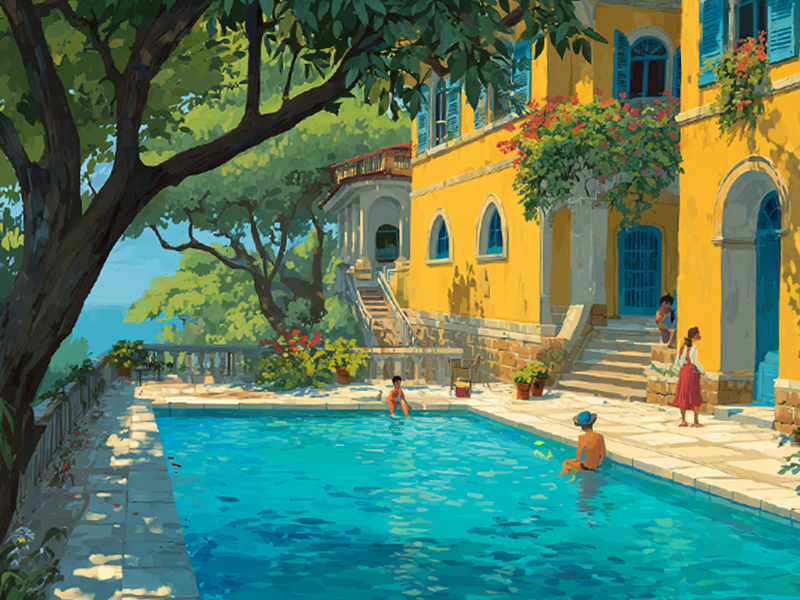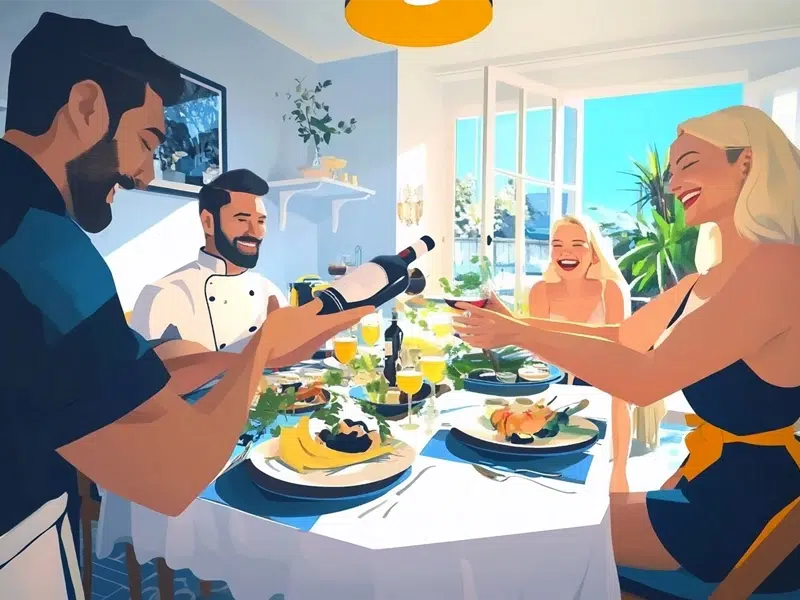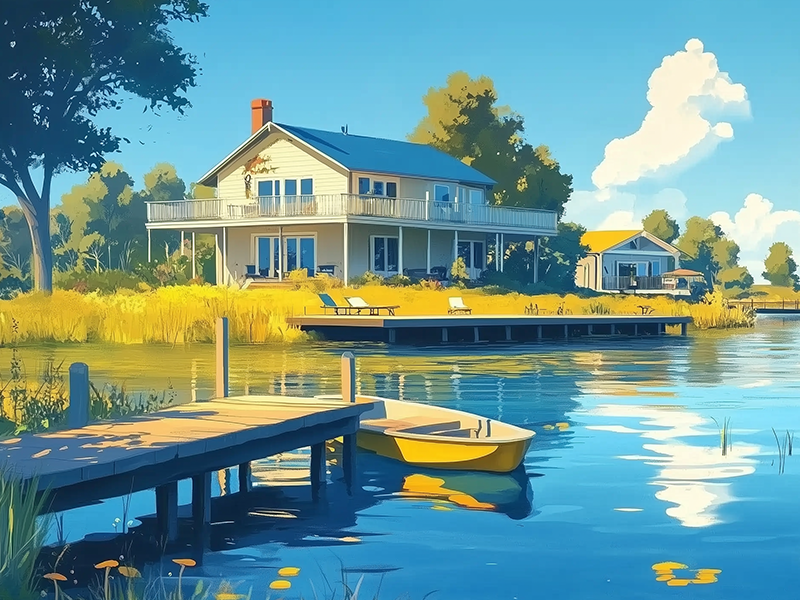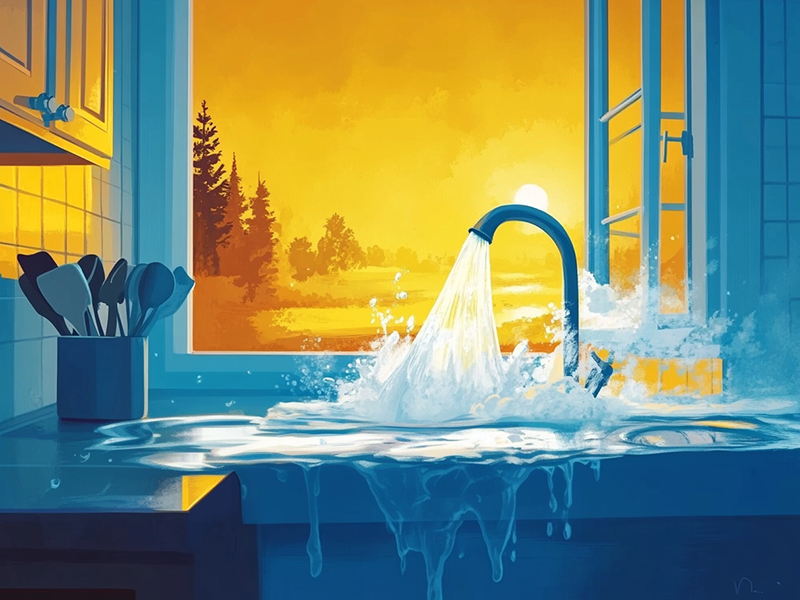Vacation Rental Safety: Handrails and Guardrails
It can be easy to overlook common vacation rental safety features when preparing your rental for guests, but it’s important to ensure that your vacation rental is up to proper safety standards, specifically for guardrails and handrails in your home.
We know that the topic of vacation rental safety concerns can be a drag, but fully understanding the specific risks in your home is the best way to ensure a safe stay for your guests and protect yourself against potential lawsuits. In this article:
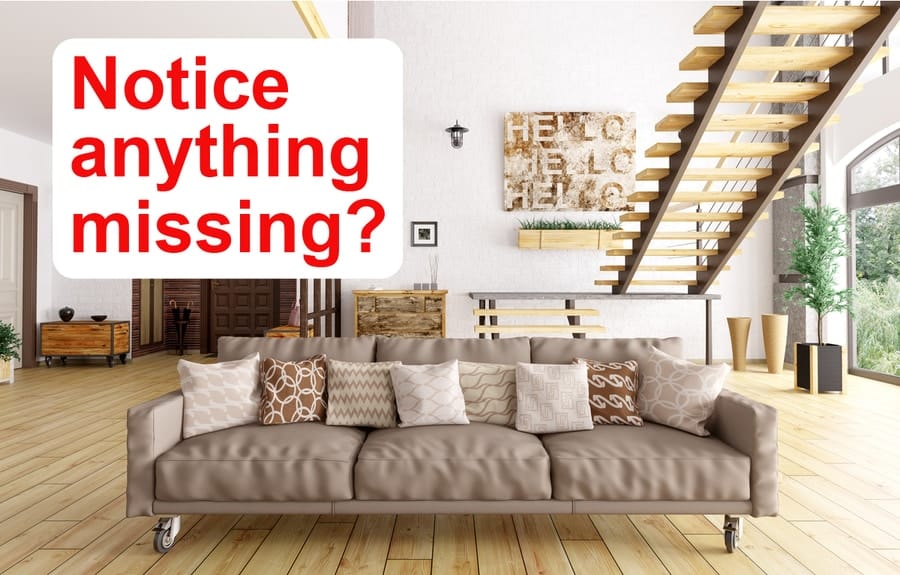
Understanding Negligence
Warning: Dense but important insurance information below. Before we dive into the vacation rental safety concerns, we need to discuss negligence as it pertains to vacation rentals and why it’s important to understand.
Simply put, negligence is the failure to “take care in doing something”. Once someone agrees to pay you for a service such as renting your home, you must take greater care in evaluating risk in your short-term rental. It’s “negligence” that puts you in a position where a renter and their lawyer may see an opportunity to prove that their injury was a result of your inattention to safety details.
When it comes to lawsuits in the U.S., you can be sued for just about anything, and there are endless opportunities for accidents in a short-term rental. This is where the insurance comes in. However, even insurance has its limitations, and if a guest can prove your negligence caused their injury, the more likely you are to exceed your insurance liability limits.
On the other hand, the more you focus on safety in your home the less opportunity for negligence on your part. If there were an injury, this effort would not only increase your insurance company’s chances of winning the case but greatly reduce the potential payout ordered by a judge.
Why Is It Important to Address Railings in Your Vacation Rental?
We understand that handrails might not always fit the aesthetic of your home, but this is a risk that you want to consider addressing, to greatly reduce the risk of being sued. You truly never know who’s staying in your home and adding handrails on interior and exterior stairs can greatly reduce the chance of someone slipping and falling, and bunk bed railings greatly reduce the likelihood of someone falling off your bed.
From an insurance perspective, claims due to a slip and fall are quite common and the National Floor Safety Institute estimates that the average cost to defend against a slip-and-fall lawsuit is $50,000. So, anything you can do to reduce this exposure is a great place to start. Of course, having the correct policy in place would ensure your legal expenses but it’s also important to think about the safety of your guests and the reputation of your rental.
Handrail Liability
First things first, if you have stairs or overhangs, you’ll want to ensure that the railings and handrails in place are sufficient. Many vacation rental owners believe that if there are already handrails in place there’s nothing to worry about, but this is not the case. Now if you have open staircases in your home without handrails or guardrails, this can cause serious injury to your guests, whether they arrive at your short-term rental in the dark or simply aren’t familiar with your property. It’s important to think about your short-term rental as a business and implement the appropriate vacation rental safety measures, before renting it out to guests.
Many lawsuits actually involve insufficient handrails. A great example of this is enclosed stairwells with no handrail attached to the wall. While the walls on both sides ensure someone will not fall off the stairs, it does not keep them from falling down the stairs. You have to consider that the balance and mobility of your guests may vary widely. Often a simple handrail to grasp is the difference between a stumble and a tumble.
Above is another example of an inadequate railing. On the top section of the stairs, you’ll notice that it is missing on the guardrails, making it easy for someone to fall off the side of the stairs. While there are exceptions within an insurance policy, typically platforms taller than 2ft should have guard railings and stair sets with more than 2 steps should have handrails for guests to grasp. Lastly, all guardrails and handrails should have spindles or crossbars whether necessary to keep children from falling through.
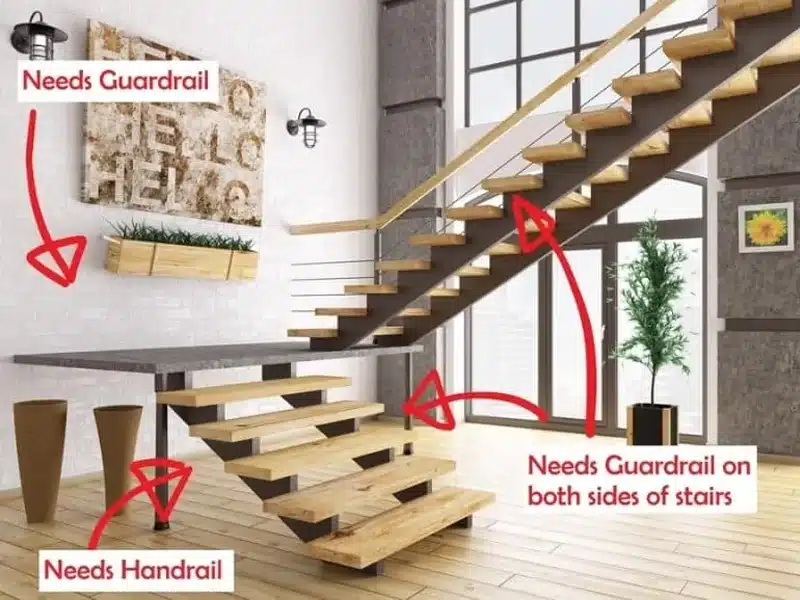
Building Code Standards
It’s common to hear short-term rental hosts referencing local building code and safety based on the local “requirements”. While this can be a good place to start, much of what you will find in local code pertains to the personal use of your home. A short-term rental property is considered “commercial use” and so there are many risks they fail to address. Additionally, standards for local building codes may vary. For this reason, we recommend following the international building code standard and analyzing individual risks in your home from the perspective of a guest.
Bunk Bed Liability
Bunk beds you might ask. These double-stacked beds can cause huge liability concerns in your short-term rental that can cause severe injury to your guests. Before renting your home to guests we recommend asking yourself “are the beds safe for your guests and their children?”, to address the potential safety concerns. The federal law mandates that all bunk beds have at least 5 inches of the guardrail above the mattress to keep your guests from falling off and that all ladders are affixed. Unfortunately, purchasing a bunk bed doesn’t ensure that these safety concerns are addressed.
Did you know that bunk beds aren’t a searchable amenity on Airbnb or Vrbo? We recommend not including a bunk bed in your short-term vacation rental to avoid any potential safety risks. However, as long as you have adequate railing and ladders, they’re acceptable for Proper Insurance.
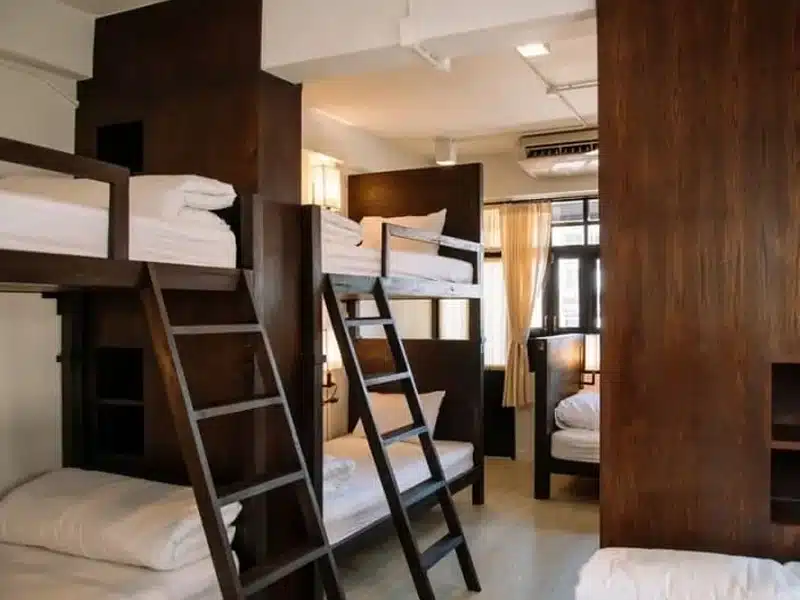
Peace of Mind With Proper Underwriting
Adequate handrails and bunk bed rails are an underwriting requirement of many insurance carriers because they are a ‘known risk’, meaning they’ve seen a high number of lawsuits involving these items in the past. Underwriters may ask that you make changes to your property such as adding handrails to continue the insurance contract, however, if there was an injury at your property your liability insurance would respond.
While this requirement may seem like a barrier to entry, there is typically a grace period in which the underwriters will notify you of potential risks and allow you to correct the issue without a gap in coverage. Choosing a carrier with underwriters experienced with short-term rentals can be a huge help as they will review your property for potential risks. They’ve seen thousands of listings and hundreds of lawsuits making it easy for them to identify issues before an accident.
Ultimately, when accidents happen, you call your insurance carrier. If your property is underwritten and insured according to its use as a short-term vacation rental your policy will respond. For this reason, it’s important to be open with your insurance carrier and ensure safety measures are appropriate for commercial use, not only your personal use.
Verify Your Short-Term Vacation Rental Insurance
Interested in a policy to protect you and your business from liability and damage claims? Proper Insurance is the nation’s leading short-term vacation rental insurance provider, with the most comprehensive policy on the market. We protect homes in all 50 states with unmatched coverage for your property, revenue, and business liability, customized to include guest-caused theft/damage, liquor liability, amenity liability (bikes, kayaks, hot tub, etc.), bed bugs, squatters, and more.
